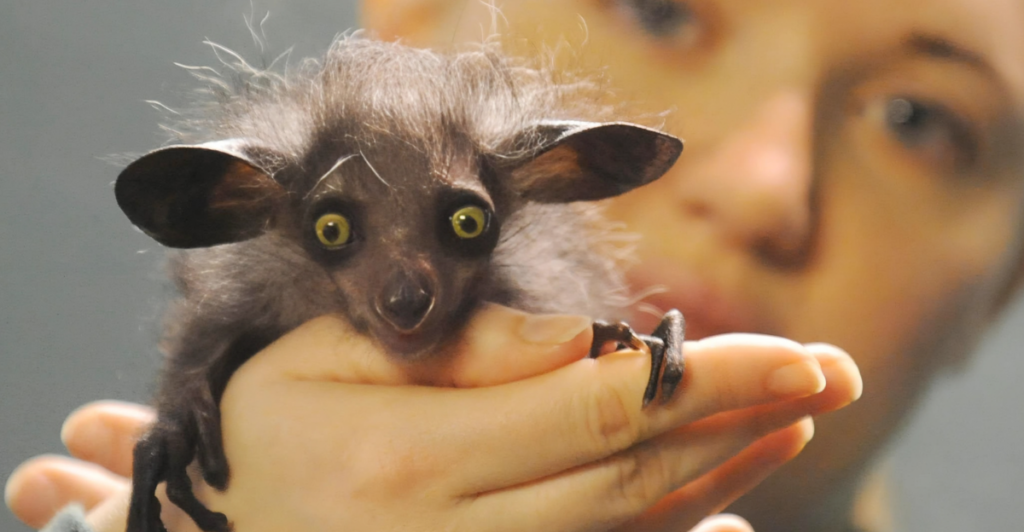
All around the world, you can find some unique and bizarre creatures roaming their ecosystems while displaying strange behaviors and traits that you won’t find anywhere else. From the dense jungles of Madagascar to the deserts of Argentina, nature has produced some of the world’s strangest species. Some have developed unique features like oversized claws, incredible camouflage, or even the ability to survive in extreme conditions.
In this article, we will discuss nine countries that are home to strange animals that you might’ve never heard of, from Madagascar’s aye-aye to Argentina’s pink fairy armadillo. These fascinating animals are not only strange but also essential to their regions’ biodiversity, making them truly one-of-a-kind wonders of the animal kingdom.
1. Madagascar: The Aye-Aye
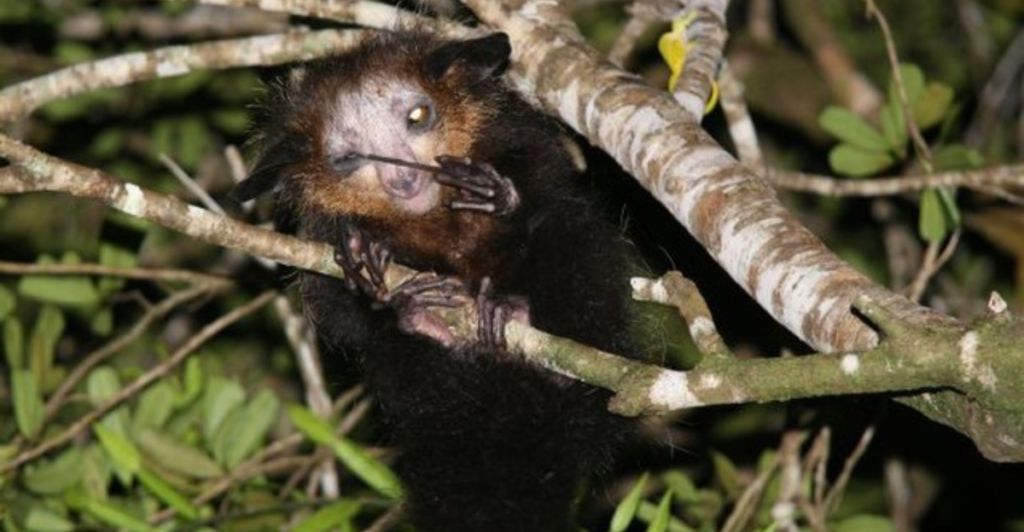
The aye-aye is the largest nocturnal primate and is one of Madagascar’s most peculiar animals. These lemurs spend most of their lives high in the forest canopy and rarely come down to the ground. They sleep it leafy nests during the day and become active at night, using their massive, sensitive ears and large yellow eyes to locate prey in the dark.
The aye-aye’s most distinctive feature is its elongated, skeletal middle finger. It uses this finger to tap on wood and locate grubs; then, it gnaws holes into the wood with its ever-growing rodent-like teeth to extract them. Aye-ayes are solitary and often mark their territories with their scent. Unfortunately, local superstitions often associate them with bad luck, contributing to their endangered status.
2. South Africa: Armadillo Girdled Lizard
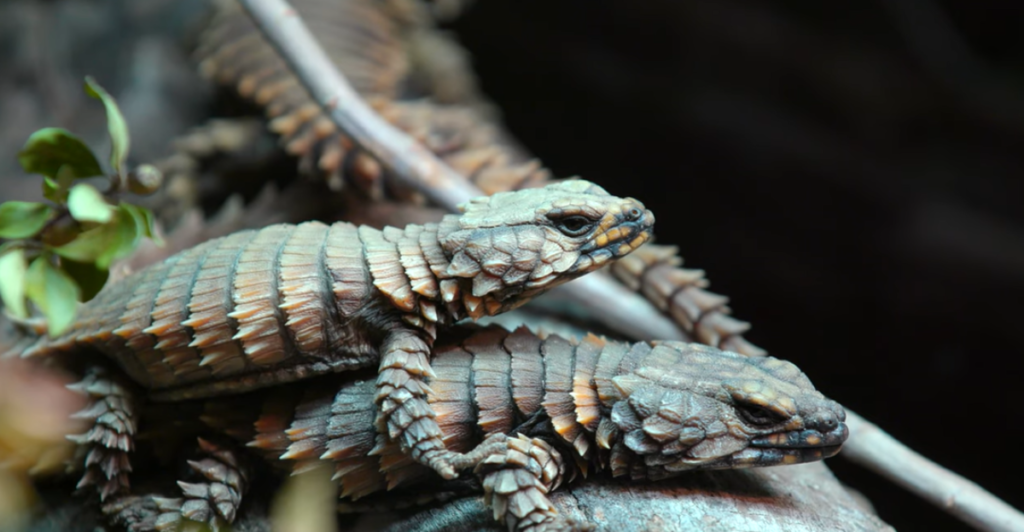
The armadillo girdled lizard can be found in South Africa’s Succulent Karoo biome and is a heavily armored reptile with a spiny, flattened body that helps it squeeze into rocky crevices for protection. When these lizards feel threatened, they curl into a ball and bite their tails, shielding their vulnerable bellies with their tough, squarish scales.
These lizards live in social groups of up to 60 individuals and are unique among reptiles for giving birth to live young. Male armadillo girdled lizards are very territorial and will defend their patch and mate with females in their groups. These lizards mainly feed on termites and other invertebrates. Their dragon-like appearance, social structure, and unusual defensive tactics make them a standout in South Africa’s biodiversity.
3. Galapagos Islands: Magnificent Frigatebird
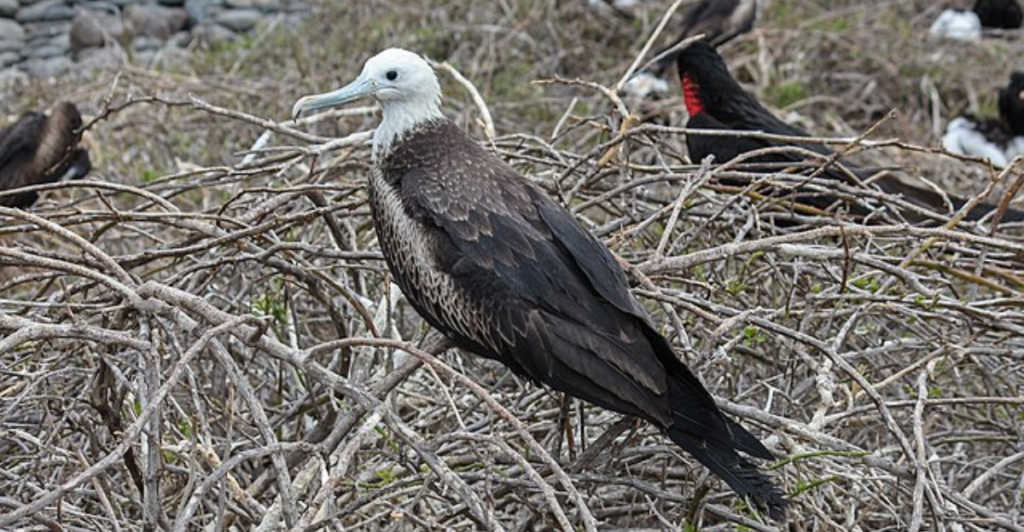
The magnificent frigatebird lives in the Galapagos and is known for its aerial mastery and striking looks. Males will inflate their red throat pouch, or gular sac, during courtship to create a dramatic display to attract females. With a wingspan of up to 8 feet, these birds have the largest wingspan-to-body-weight ratio of any bird, allowing them to soar for days without landing.
They are infamous for kleptoparasitism and will harass other seabirds mid-flight to steal their food, earning them the nickname “pirate bird.” Their long, forked tails and lightweight bodies provide exceptional maneuverability. These birds nest in low shrubs, with parents often providing extended care to their single chick.
4. Madagascar: Fossa
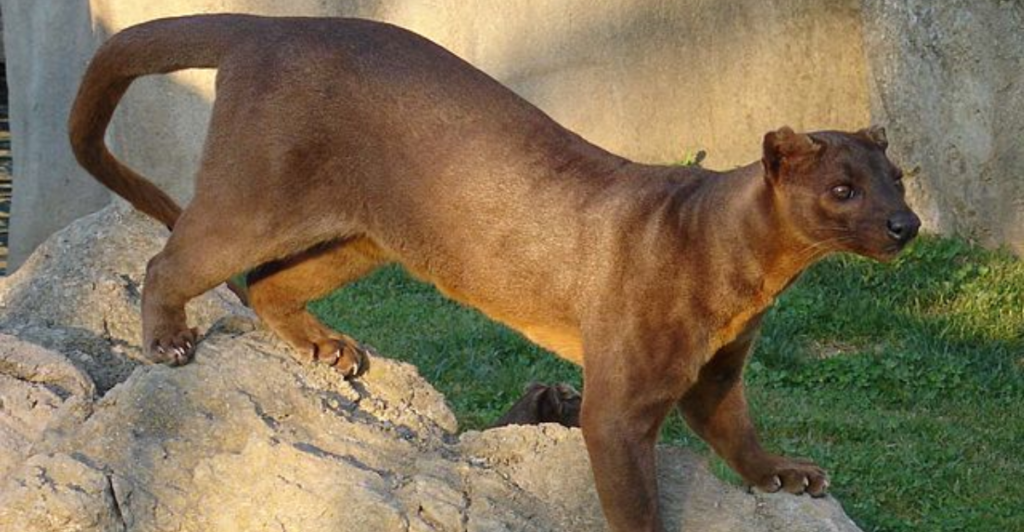
The fossa is Madagascar’s largest carnivore and top predator. This creature looks like a cross between a cat and a mongoose with its sleek and muscular body. These animals can reach 80 centimeters in length and have tails that are nearly as long as their bodies, which help with balance as they move through the forest canopy.
Fossas are agile climbers that hunt during the day and at night. They mainly feed on lemurs, but their diet also often includes rodents, birds, reptiles, and insects. These solitary creatures mark their territories and communicate through scent and vocalizations. Despite their ecological importance, fossas are threatened by habitat loss and hunting, making their conservation vital for Madagascar’s forests.
5. Latin America: Sloth
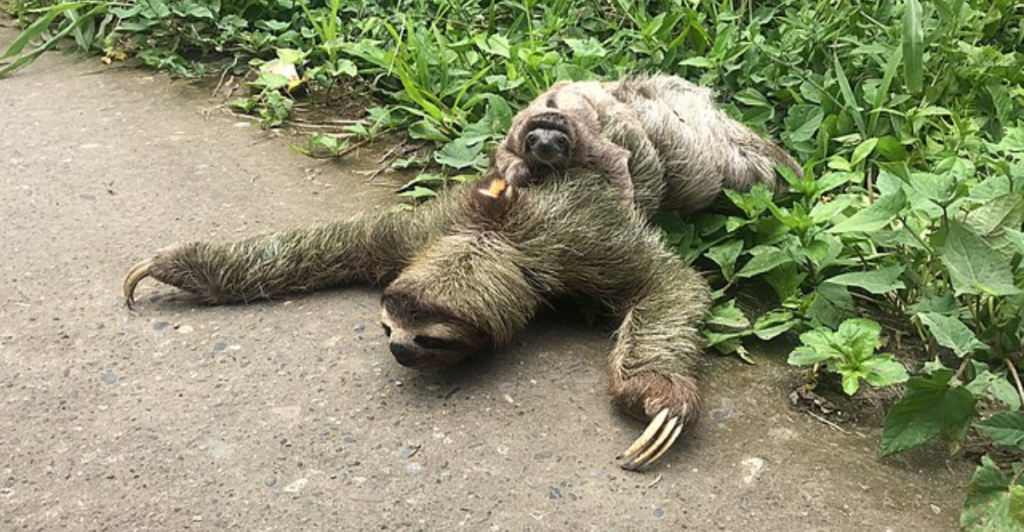
Sloths, which are quite common in Central and South American rainforests, are famous for their slow movements and perpetual “smile.” There are two main types of sloths, two-toed and three-toed sloths. These creatures spend most of their lives hanging upside-down from tree branches with their long, curved claws.
Their fur is often full of algae and insects, providing camouflage and even medicinal fungi. Sloths have the slowest metabolism of any mammals, taking up to a month to digest leaves, their primary food source. Surprisingly, they are strong swimmers and move faster in water than on land. Their sluggishness helps them avoid predators, and their unique adaptations make them one of Latin America’s most unusual mammals.
6. South America: Capybara
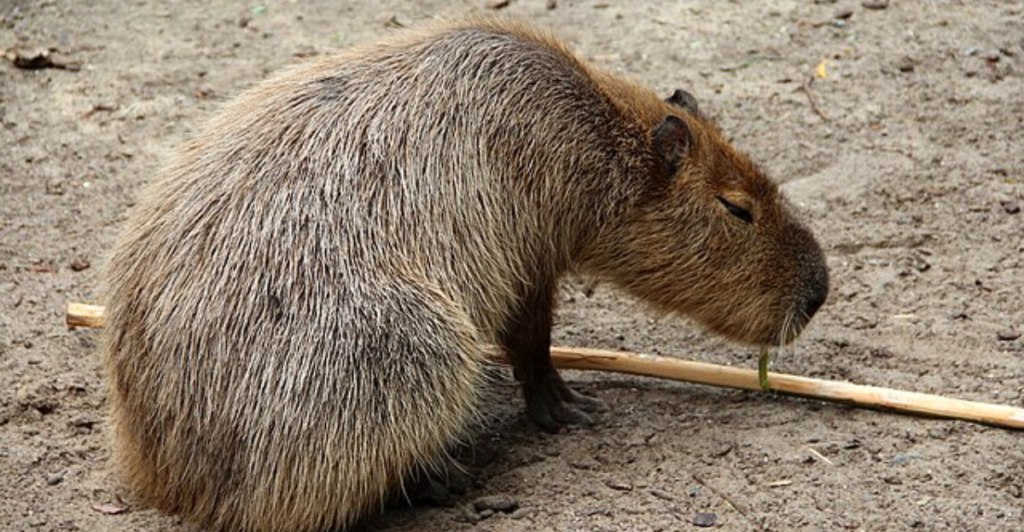
The capybara is the world’s largest rodent and can be found in South America’s wetlands, rivers, and marshes. These semi-aquatic mammals can weigh up to 145 pounds and are highly social, living in groups of 10–30, with gatherings of up to 100 during the dry season. Capybaras are excellent swimmers and use their slightly webbed feet to evade predators. They can stay submerged for up to five minutes.
They mainly feed on grasses and aquatic plants and use coprophagy to maximize nutrient absorption. These adorable creatures use a variety of vocalizations to communicate and have complex social structures. Their calm nature allows birds to perch on them, making them a beloved and iconic feature of South American wetlands.
7. South America: Velvet Ants

Velvet ants, which can be found all over South America, are actually wasps. Females are wingless, covered in dense, velvety hairs, and display striking colors like red, black, or white, serving as a warning to predators. They are known for their extremely painful sting, which is among the most excruciating in the insect world, earning them the nickname “cow killers.”
Velvet ants have a durable exoskeleton and often produce squeaking sounds when they feel threatened. They are solitary and parasitize the larvae of other insects, playing a role in controlling host populations. Their bright coloration, powerful sting, and unusual life cycle make them ecologically important and one of South America’s most bizarre insects.
8. Argentina: Pink Fairy Armadillo
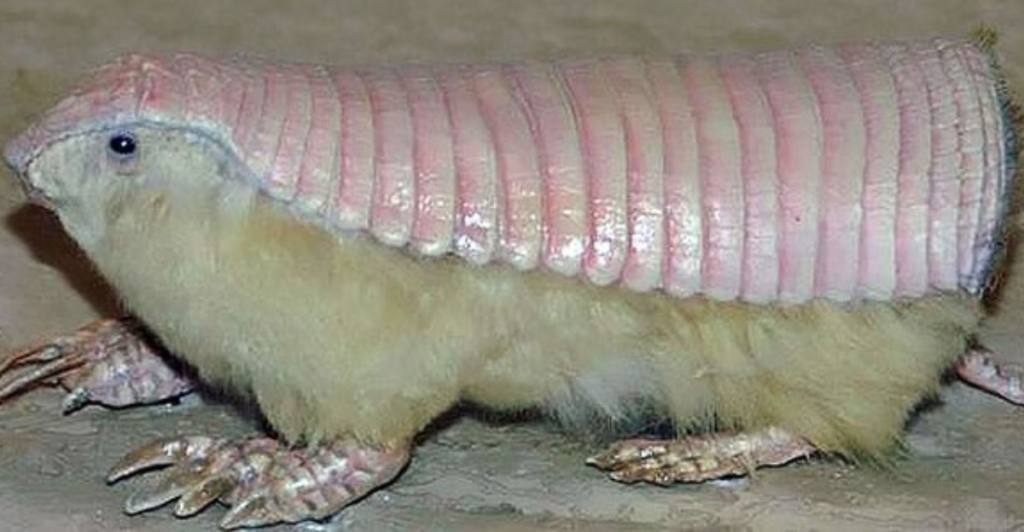
The pink fairy armadillo is native to Argentina and is the smallest and arguably the rarest armadillo species. These tiny creatures measure up to six inches long and have thin, flexible pink shells that they use for temperature regulation rather than protection. Their large front claws allow them to burrow rapidly into sandy soils, disappearing underground within seconds.
The pink fairy armadillo is nocturnal and solitary and feeds mainly on insects, worms, and plant material. Its soft white fur and delicate appearance make it extremely sensitive to environmental changes and stress, and most individuals do not survive in captivity. Its elusive nature and unique adaptations make it one of Argentina’s most mysterious and endangered mammals.
9. Chile: Panda Ant
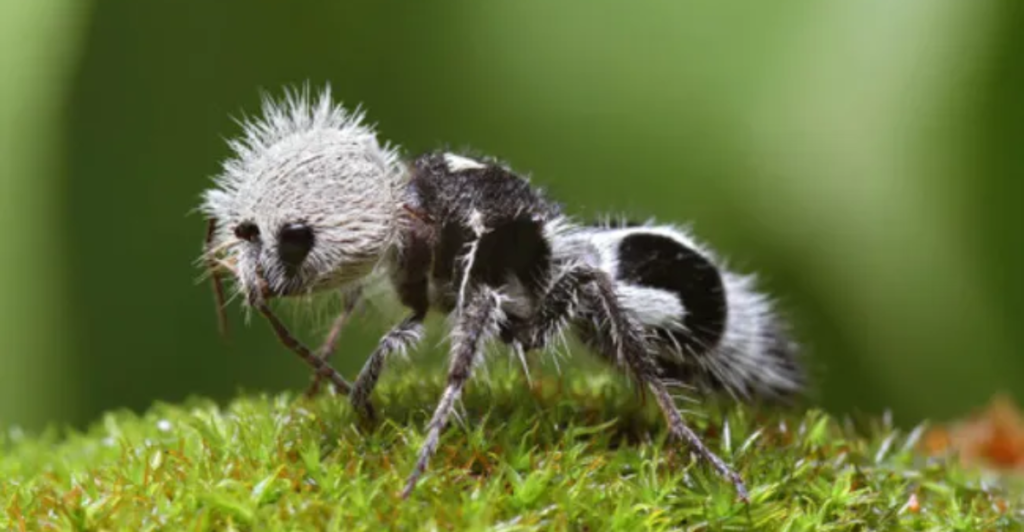
The panda ant, which can be found in Chile, is a striking species of velvet ant (actually a wasp) known for its black-and-white coloration, resembling a miniature panda. Females are wingless and diurnal, while males are larger and nocturnal. The panda ant’s sting is extremely painful and can trigger severe allergic reactions, but it is not usually life-threatening.
Panda ants are solitary, with females laying eggs in the nests of other insects, where their larvae parasitize the host. Their vivid coloration serves as a warning to predators, and their exoskeleton is one of the hardest in the insect world, helping them survive in dry, sandy habitats.
Explore more of our trending stories and hit Follow to keep them coming to your feed!

Don’t miss out on more stories like this! Hit the Follow button at the top of this article to stay updated with the latest news. Share your thoughts in the comments—we’d love to hear from you!







